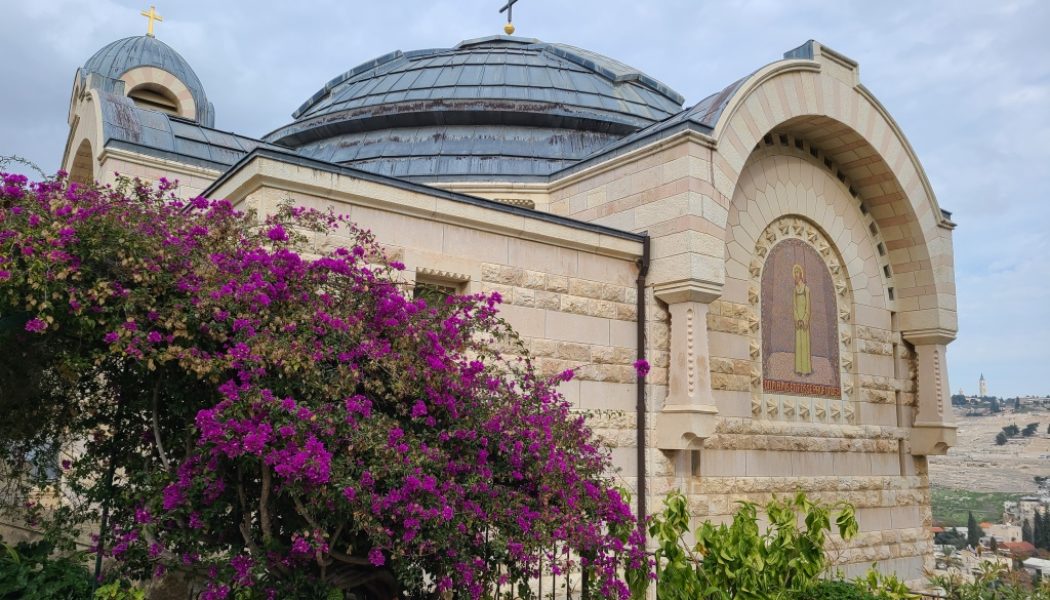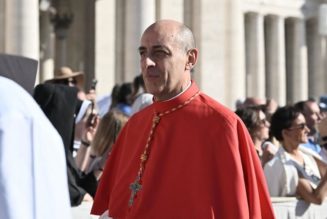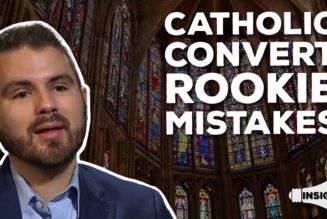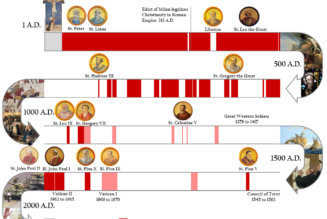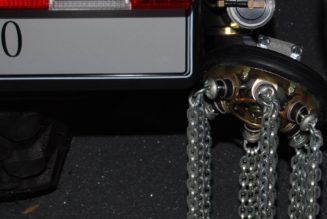Notes from the Author:
1) First and foremost–I offer this post to Our Lord through the intercession of His Mother, St. Joseph, and St. Stephen: in reparation for my sins and the sins of the world, for our repentance, and for an enduring peace throughout the Middle East and the world as quickly as possible.
2) It has been a while since I have posted. My previous post can be read here: https://zistezesto.wordpress.com/2023/12/20/chapter-6-exploring-little-and-some-well-known-sites-in-the-holy-land-bethlehems-bright-streets-the-sky-shattered-by-glorias-holding-our-eucharistic-lord-in-the-cave-of-the-nativit/
3) As a reminder, copy/paste GPS Coordinates listed below into Google Maps to see or travel to each location.
4) I apologize for any annoying ads wordpress.com automatically and randomly posts within this article–they are not of my choosing.
5) Lastly, if you enjoy this post and want to learn more, check out my one-of-a-kind book, The Second Person of the Trinity in Time and Space: What is Known Historically About Jesus and the Holy Sites of the New Testament, sold on Amazon.com! (link at the bottom of this post)
///
After taking a brief respite at Our Lady’s “Rest Stop,” (see my previous post), I continued on the ancient route from Bethlehem into the Holy City of Jerusalem. For many reasons, visiting Jerusalem is always an incredible blessing and honor. Our Lord Himself in Matthew 5:35 refers to Jerusalem as “the city of the great King.” Whenever I walk into the city, I think of the numerous responsorial Psalms at Masses throughout each year which extol Jerusalem and its glory…”when the Lord brought back the captives to Zion (Jerusalem), we were like men dreaming…” (Psalm 126:1). As I’ve mentioned before in my blog: men and women have *walked* literally thousands of miles risking life and limb for the chance to visit the Holy City. Despite current events, how blessed we are to live in times where it has never been physically easier to journey to Jerusalem!
My first stop as I crossed into the Jerusalem area was the Church of St. Peter at Gallicantu (or “the Place of the Cockcrow”) (GPS Coordinates: 31°46’16.75″N, 35°13’55.40″E). This church is built over the traditional place of Caiaphas’s Palace where Jesus was tried before the Sanhedrin and, outside of which, St. Peter heard the cock crow after denying Jesus three times.

The inside of the modern church, which is built over the remains of earlier churches and other ancient structures, is very beautiful. Inside you can take stairs down to a cistern called the “Prison of Christ” which some believe may have been used to hold Jesus after His trial by the Sanhedrin and before His trial by Pilate.
What I specifically wanted to examine on this trip, since I had visited this church before, was an ancient flight of stone stairs next to the church. These stairs (GPS Coordinates: 31°46’17.56″N, 35°13’55.75″E) have been dated to the First Century and would most likely have been used by Our Lord and the Apostles to walk down from the Last Supper on Mount Zion eastwards to the Valley of Josaphat so they could then turn north towards the Garden of Gethsemane.
Below is a photo looking down from the top of the stairs that are still in situ today.

Below is a photo from the stairs looking northeast. On the other side of the Temple Mount’s retaining wall in the photo (upper left large tan structure) lies the Garden of Gethsemane.

A sculpted stone relief mounted above the stairs portraying Christ and His Apostles taking the same stairs down to Gethsemane at nighttime using torches:

Although fencing precludes one from actually walking down the stairs themselves, I followed a modern set of stairs alongside them downwards to the bottom of the stairway and looked back up. This would have been the view our Lord likely would have had as he was brought back up Mount Zion — the same path he had earlier descended — from the Garden of Gethsemane up to his trials before Annas and Caiaphas:

Another sculpted stone relief on display, this time portraying Christ being brought back up the same stairs by His captors to be tried by the Jewish leaders:

Below is another view of the Church of St. Peter at Gallicantu. The courtyard in the bottom left of the photo (at what appears to be the top of the ancient stairs) may have been the approximate area where St. Peter would have been warming himself by the fire when he denied Jesus and heard the cock crow.

There is a monument in the courtyard that commemorates the tragic event (notice the cock crowing on top of the pillar). “Non novi illium” is Latin for “I do not know Him.”

The photo below of the eastern side of the Church of St. Peter shows the remains of numerous ancient Jewish structures, including a grain mil, a grain silo, a Jewish ritual bath (mikveh), and other building annexes that were discovered by archaeologists. The foundations of the Byzantine-era church that once covered the site can also be seen in this area.

After exploring the outside of the Church of St. Peter, I stopped inside for a brief visit to pray and reflect about the events that happened in this very place. The inside of this church has a stunning stained glass ceiling and glorious pastel-colored mosaics:

The mosaic below particularly stood out to me. It shows St. Peter’s darkest moment when Our Lord looks at Him after Peter’s denied Him three times (Interestingly, the detail of Jesus’s look at Peter is only found in St. Luke’s Gospel and not in the others), but shows how God’s mercy reformed Peter and elevated him to be the leader of the new Church and the first Pope. Very powerful…

After visiting the Church of St. Peter in Gallicantu, I set off to explore more of Jerusalem.
Now, living in Europe for the last few years has conditioned me not to count on the availability of parking spots, much less parking spots close to popular destinations in large cities. My “go-to” has been finding parking garages using Google Maps, parking in a parking garage, and then walking to all the different destinations across the city. This is basically what I had done on my last trip to Jerusalem…including running the two miles from the Old City, up the Mount of Olives, and all the way to Bethany. This trip, I decided to take a different approach. To save time and energy, instead of parking in my “go-to” parking garage outside the west side of the Old City and walking to the next destinations on my itinerary, I would drive and try to find some open parking spots. As I drove from Mount Zion east and up the Mount of Olives, I was shocked to see a few open, free spots for me to park my rental car! God is good! I parked and started walking toward the summit of the Mount of Olives–the place where Our Lord ascended into Heaven.
The photo below shows the stairway into the site of the Ascension’s entrance. Curiously, at one point in history, the small chapel built over where Jesus ascended was occupied by Muslims and converted into a mosque (GPS Coordinates: 31°46’44.03″N, 35°14’42.07″E). The site continues to be overseen by the Muslims today. Thankfully, however, the Muslims overseeing the site allow Christians to pray here and also to hold services here on the Feast of the Ascension.

The sign for the Chapel of the Ascension:

After stepping up the stairs, and walking through a gateway which passes through a 20-foot wall encircling the area, you behold the humble site of our Lord’s glorious Ascension. The earliest record we have mentioning this place comes to us from the Bordeaux Pilgrim who visited the Holy Land in A.D. 333, two decades after Constantine legalized Christianity throughout the Roman Empire. (interestingly, though, he confuses it with the site of the Transfiguration).
In late Roman & Byzantine Times, there used to be a very large church over this site, which had an open roof. Little remains of the Byzantine Church, except for some foundation stones which have been incorporated into the present wall around the area.
As I stood looking at the humble area, I got a wide-angle photo of the Chapel of the Ascension and the sky above it (see photo below)…this was the very area Our Lord left the earth in bodily form, and perhaps the same area He will return to at the end of time. It is incredible to visualize the event described in Luke and Acts and what it would have looked like. I wonder how many of Jesus’s disciples had been present here for the Ascension? Our Lady had to have been here as well. I’m certain she must have been basking in the glory of her Son and longing to be with Him again just as soon as He left–“with love beyond all telling.” (as the Preface II of Advent in the Roman Missal describes Our Lady’s love for her Son)


I stepped into the small chapel. There’s not much inside except for a Muslim mihrab niche pointing towards Mecca, and a cutout in the stone floor revealing a stone which ancient pious tradition holds has one of the footprints of Christ which He left as He ascended to Heaven. This pious tradition goes back to at least around A.D. 680 when it was mentioned in Adoman’s account of Bishop Arculf’s pilgrimage to the Holy Land.


After standing and meditating about where I was, the other pilgrims who were inside left, leaving me all alone at this holy place. I decided to sit down along the wall closest to the footprint to pray. I kept looking up, imagining Jesus ascending right next to me. I would have been sitting at the Lord’s very feet! It was a powerful experience having this holy site all to myself and praying alone in silence for some time. I prayed the Second Glorious Mystery of the Rosary in the place where it happened…God be praised!
After praying, I left the site, got into my car and drove westward further down the Mount of Olives (which is very steep with narrow roads!). Before reaching the bottom, I was able to park in a (free!) parking lot. I hopped out of my car and was able to get some lovely photos of the northern Kidron Valley with the Garden of Gethsemane below me and the Temple Mount in the distance west of me:

One of the places I was especially interested to see from above is the area of the Cave Church of the Tomb of the Blessed Virgin Mary. Ancient traditions hold it was in the caves at the foot of the Mount of Olives in the Kidron Valley where the ancient Christians of Jerusalem with the Apostles laid the Blessed Virgin Mary to rest after she passed away on Mount Zion. Interestingly, this site is immediately to the north of the Garden of Gethsemane where Jesus prayed on Holy Thursday. Slightly to the east of the large cave where Mary was entombed is another cave that tradition has it is where Jesus was betrayed by Judas and where the other 8 Apostles had been sleeping while Jesus took Peter, James, and John to pray. That, according to the Gospels, Jesus frequently met with His disciples in this area indicates friends or family of Jesus and Mary may have owned this land and allowed Jesus and early Christians to meet here, and for Mary to be laid to rest here.
The photo below shows the wooded area around the Cave Church of the Tomb of the Blessed Virgin Mary; the back of the browned-roofed, Crusader-era structure enclosing the entrance to the cave complex can be seen just under the white bus towards the center of the photo.
If the most ancient traditions of the location of Our Lady’s Assumption are true, she (body and soul) would have been lifted up from the earth and up into the heavens potentially through the space shown in this photo above the Cave Church (GPS Coordinates: 31°46’48.86″N, 35°14’22.07″E).

Zoomed in a bit closer to the area of Our Lady’s final resting place and from which she was assumed into Heaven:

I started making my way down the Mount of Olives towards Our Lady’s Tomb and briefly stopped at the Garden of Gethsemane (GPS Coordinates: 31°46’46.62″N, 35°14’22.77″E).

As was my routine on trips to the Holy Land when I stopped by the garden, I checked to see if a Mass was being said adjacent to the rock where Our Lord would have prayed the night before His Passion. This rock is inside the grand Church of the Nations built in the Garden of Gethsemane. This was my fourth trip to the Holy Land and, each time, I had been unable to touch and pray at the holy rock. As luck would have it…no dice once again…a group of pilgrims was in the middle of Mass there. Maybe next trip! 🤞
I kept walking down from the garden lower into the Kidron Valley till I came to the entrance into the Cave Church of Our Lady’s Tomb:

The church has a very interesting layout inside with a long flight of stairs that leads to a crossing at the bottom:

I walked slowly down the broad stairs. The sweet but dull smell of generations of burnt incense hit my nostrils and grew stronger as I proceeded forward. When I reached the bottom of the stairs, I snapped a photo looking back up the impressive, long, ancient staircase…

…I then turned to the right and could see the small, but now ornate edicule built around the stone platform where Mother Mary’s body was once laid:

Below is the entrance into her tomb chamber:

At the rear exterior of the edicule, a plastic panel covers what appears to be some of the natural stone that was part of Mary’s original tomb:

I stepped into the tomb chamber and saw the altar built above the holy tomb of Our Blessed Mother (see photo below). What a holy place! I can imagine the Apostles and other disciples processing past Our Lady’s body here as they said their final goodbye’s. And then, at some point (some of the ancient sources say it was three days after her death, like her Son), Our Lord assumed her body and soul into heaven from here! I had the opportunity to verify for myself…the Blessed Virgin Mary was NOT still in her tomb! What an amazing honor Christ afforded to His mother to bring her body and soul to Heaven ahead of anyone else from the entire human race! Her life had been perfectly conformed to the will of her Son.

I then looked at the rough, unassuming slab of rock below the altar that once held humanity’s Holy Mother (see photo below). I reflected on the vastness of her humility. I am reminded of one of my favorite quotes about her, which was actually stated by a person not typically known for embracing traditional Catholic Christian beliefs:
“She, the Lady above Heaven and Earth, must have a heart so humble that she might have no shame in washing the swaddling clothes or preparing a bath for St. John the Baptist like a servant girl. What humility! It would surely have been more just to have arranged for her a golden coach pulled by four thousand horses and to cry and proclaim as the carriage proceeded ‘Here passes the woman who is raised above the whole human race!’ She was not filled with pride by this praise, this immense praise.
No woman is like unto thee. Thou art more than an empress or a queen. Blessed above all nobility, wisdom, or saintliness.”
These are the words of none other than Martin Luther.

After praying at Our Lady’s tomb, I went back up the cave’s stairs, walked back up the Mount of Olives to my car, and drove to my last destination of a very long day. Although I had been awake since around 2 AM, I wanted to make the very most of every second I was able to spend in the Holy Land.
My last destination was the Basilica of St. Stephen the Protomartyr (“proto” is Greek for “from” or “first”) outside the northern edge of Old City Jerusalem (GPS Coordinates: 31°47’5.06″N, 35°13’46.76″E). The most ancient traditions hold the site of this church is the location where St. Stephen–Deacon and the Church’s first martyr–was stoned to death in A.D. 36. A church had been built here by the Byzantines in the mid-400s, however, it was destroyed and lost to history until being discovered once again in the late 19th Century during excavations. The site was purchased by the Church and a new, stately Basilica was built over the same location as the first church. This Basilica today, standing since 1900, is occupied by the Dominican Order.
I was able to park not far from the premises of the Basilica and then walked towards it. The trees inside its walls were awash in the golden dusk sunlight of a lovely Middle Eastern evening:

I walked up to the main gate and saw the sign below. I was there! Unfortunately, the gate into the premises was closed. I was disappointed and began to fret a bit that I might not be able to see this holy place. However, I remembered the technique I had used earlier that same day when I faced the same situation at the Orthodox Shepherds Field Church outside Bethlehem…I said a prayer and I pushed the button to the telecom! I waited for a short time and a voice answered and said “Hello?” I replied “Hello, I would like to please visit the Basilica.” There was no response, but all of a sudden, the gate began to automatically open, and I stepped thru…

I was now standing in the holy area where the great St. Stephen the Martyr had breathed his last! The Basilica was directly in front of me. The evening sunlight on the beige stones of the Church, the glorious blue sky, and some interesting-looking trees made it quite a sight:

Immediately to my right inside the gate were ancient, colossal column drums, probably once used to hold up the roof of the first 5th Century Basilica here:

I walked through the central portal into the porticoed porch of the basilica. Another stunning view:

In the middle of the porch atop a column from the ancient church was a statue of St. Stephen kneeling in prayer. It was a powerful sight to behold and helped stimulate my imagination as I attempted to visualize the historic event that happened here. St. Stephen’s sacrifice has reverberated through the centuries and inspired countless others to follow his holy example.

I then entered the Basilica itself. No others were inside…it was so quiet. The Basilica was large and had an impressive Byzantine-type style:

I walked to the front of the church and beheld its majestic frescoes of Christ flanked by the two earliest of the martyrs mentioned in the New Testament: St. John the Baptist and St. Stephen.


I walked over to the right aisle and saw the Blessed Sacrament altar. A gorgeous statue of the Blessed Virgin Mary holding the Child Jesus was at its zenith. I knelt and spent about 10 minutes in silent prayer at this holy site, asking for St. Stephen’s prayers for my special intentions and for God’s graces. I thanked the Lord for the example of St. Stephen–for giving him the strength to persevere despite the unimaginable, torturous physical pain of having your body incrementally crushed stone-by-stone. I thanked Him for the example of all the martyrs and humbly asked Him, should it be His will, to give the Church today that same strength for His glory.

After praying in front of the Blessed Sacrament, I walked across the church to the left aisle and saw a sight that made me grin. Crowning the altar on that side of the church was not a statue of St. Joseph, nor of the Basilica’s patron Saint Stephen (as is typical in many Catholic Churches), but instead a statue of St. Paul the Apostle. If one remembers from the account of St. Stephen’s martyrdom in the Book of Acts, it was at the feet of St. Paul (at the time known as “Saul”) St. Stephen’s executioners laid their cloaks–indicating St. Paul had some kind of responsibility for St. Stephen’s death.
Therefore, ironically, in the basilica today St. Paul continues to “look over” the place of Stephen’s martyrdom, but not as a consenting party to the martyr’s death, but as a repentant sinner transformed into a Saint himself by the grace of the God Stephen died for!
I couldn’t help taking the photo below showing St. Paul (statue) and St. Stephen (fresco) together again at the same place they met on that fateful day nearly 2,000 years ago. Wow!

After exploring the inside of the Basilica, I decided to look around outside. As I walked through the very quiet area around the basilica, my mind kept racing back to the image of a band of angry, screaming people surrounding St. Stephen here and tragically pummeling him with stones. Such a contrast to the peace and calm here that I now experienced.

In the photo below, a good view of the area from the back of the basilica. St. Stephen was martyred in this general location:

As I walked around the back side of the basilica, I even found an excavated section of mosaic floor from the ancient church that once stood here:

After walking around, taking in the site, and picking up some small rocks as souvenirs from this holy place, I walked to the porch of the basilica and took some additional photos of this incredible location:


After saying some additional prayers, I walked back to my car and drove to my hotel just outside Jerusalem’s Old City. It had been one of the most incredible days of my life: tracing the steps of the Holy Family, the Magi, and the Shepherds; and visiting the place of Our Lord’s trial and St. Peter’s denial, the place of Christ’s Ascension, the Garden of Gethsemane, the place of our Blessed Mother’s Assumption, and the place of St. Stephen’s martyrdom.
Now, I had to get some rest and prepare for tomorrow’s adventure: exploring the Plain of Jericho and walking the Road to Emmaus…
Thank you for reading and more to come!
Also, if you enjoyed, this post, check out my one-of-a-kind book, The Second Person of the Trinity in Time and Space: What is Known Historically About Jesus and the Holy Sites of the New Testament, sold on Amazon.com! (click below)
